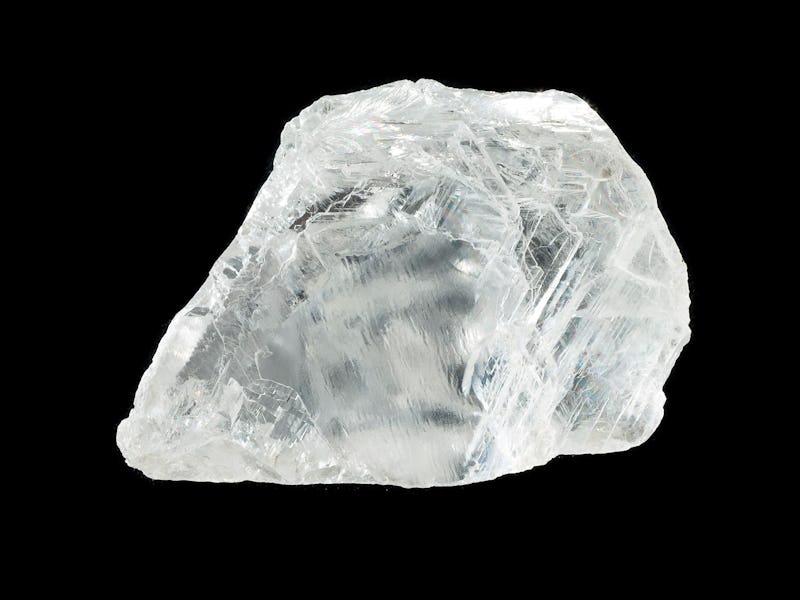Diamonds shine light on the Earth's inner workings
These shiny gems might just hide secrets about what's happening under the Earth's surface

Diamonds may be a scientist’s best friend: These tightly packed carbon beauties played a crucial role in revealing the Earth’s inner workings, including subterranean oceans and time stamps of the planet’s first tectonic shifts.
The discoveries came from the Deep Carbon Observatory (DCO) program. The study started in 2009 and has resulted in 1,400 research papers from 1,200 scientists. To celebrate its ten-year anniversary, the collected research is now being presented and celebrated through Saturday in Washington, DC at the U.S. National Academy of Sciences. Out of these thousands of papers, the program identifies ten major discoveries for its ten years of operation, including previously unknown carbon-minerals, an ocean of water within the Earth’s mantle, clues to life’s origins and a thriving microbial biosphere.
And the project isn’t over yet. Catherine McCammon, a contributing scientist on the project described the DCO as the “seed from which decades of future discoveries in deep carbon science will grow.”
Another contributing scientist, Isabelle Daniel, also says that what made this research initiative especially impactful were the number of different scientific disciplines and countries involved in the research.
“Working together across the classical boundaries has led to the discovery of a whole range of hydrocarbons forming at depth and that could feed the subsurface biosphere.”
In addition to diamonds, scientists also discovered new carbon-bearing minerals. Including triazolite pictured above.
You can read the DCO’s entire report on its ten years of research here, but if you don’t have time to go through 1,400 papers, here are a few of our favorite discoveries:
Subterranean Ocean Revealed
Between 1.3 million feet to 2.2 million feet below the Earth’s surface, scientists discovered pockets of diamonds that were holding on to traces of water, revealing the existence of a subterranean ocean. This water was likely pulled from Earth’s surface through tectonic movements. The mass of H2O trapped in these diamonds is greater than that in all of the Earth’s surface oceans, the researchers say.
Here’s why we care: The discovery of water deep under the Earth’s surface will enable us to learn more about the diversity and melting characteristics of different materials at this depth, including the creation and flow of important hydrocarbons like petroleum and natural gas, the scientists say.
Tectonic Time Stamps
Grinding tectonic plates are not only responsible for the earthquakes we experience today, but also for the movement of the continents across Earth’s long history. By carbon-dating some of the super-deep diamonds, researcher say they now know exactly when everything started moving around.
The beginning of tectonic activity appears to date to around 3 billion years ago, when the Earth was only 1.5 billion years old — compared to the estimated 4.5 billion years it is today.
A Secret World of Microbes
A biosphere deep under the Earth may be one of the planet’s largest ecosystems, according to one study in the project. Made up of microbes and bacteria with a carbon mass 250 to 400 times greater than that of all us surface-dwelling humans. These little organisms survive in the world’s harshest environments, thriving in extreme pressure and heat and appear to sustain themselves on gases like methane.
Studying this ecosystem can help deep-sea researchers better understand the habitats of similar abiotic animals in the oceans. It could also help astrobiologists imagine how life might survive beyond our Pale Blue Dot.